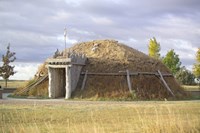- Lesson Plan (88)
- Field Trips (25)
- Student Activities (13)
- Distance Learning (9)
- Other Education Materials (5)
- Science Labs (2)
- Teacher Reference Materials (2)
- Traveling Trunk (2)
- Primary Sources (1)
- Acadia National Park (24)
- Glacier National Park (18)
- Abraham Lincoln Birthplace National Historical Park (5)
- Arches National Park (5)
- Grand Canyon National Park (5)
- Shenandoah National Park (4)
- Bent's Old Fort National Historic Site (3)
- Canyonlands National Park (2)
- Craters Of The Moon National Monument & Preserve (2)
- Show More ...
- Science (124)
- Social Studies (34)
- Literacy and Language Arts (27)
- Math (11)
Showing 142 results for observations ...
- Type: Lesson Plan
- Grade Levels: Upper Elementary: Third Grade through Fifth Grade
John Muir: Observation and Descriptive Writing
- Type: Lesson Plan
- Grade Levels: Upper Elementary: Third Grade through Fifth Grade
During the field trip to John Muir National Historic Site, students were encouraged to reflect on the home and work life of John Muir. They also learned about Muir’s battle to preserve wild places through writing articles and books about nature. His work influenced people all over the world and led to the creation of five National Parks. This exercise will give students a prompt for observation, analytical thinking, and descriptive writing.
- Type: Lesson Plan
- Grade Levels: Middle School: Sixth Grade through Eighth Grade
What adaptations do bees have to be effective pollinators and to survive? Students will •observe and dissect the external structural adaptations of honey bees •compare the form of the structural adaptations of honey bees to their functions •explain how the adaptations allow honey bees to be effective pollinators and survivors
- Type: Lesson Plan
- Grade Levels: Middle School: Sixth Grade through Eighth Grade
This lesson is part one (the first set of OOs!) in a three-part framework called “OO, OO, OO, Nature!” that teaches students about three types of outdoor observation: 1)Observing Outside: observe the natural elements at their school 2)Observing Ourselves: observe our own behavior outdoors 3)Observing Others: observe others’ behavior outdoors The repeating “OO” mnemonic is designed to remind burgeoning nature observers of these three different ways of observing when outdoors.
I Notice, I Wonder: Sea Star in a Tidepool
Make Your Own Astrolabe
Sound Mapping
I Notice, I Wonder: Bullfrog
Create a Brochure
- Type: Field Trips
- Grade Levels: Middle School: Sixth Grade through Eighth Grade
Students will take a field trip to an area of the Niobrara River Valley. During the trip they will use observation techniques and complete a Sensory Observation Sheet and use those ideas to prepare a brochure for a vacation would be taken in the Niobrara River valley.
What's for Dinner?
Introduction to Citizen Science
- Type: Lesson Plan
- Grade Levels: Middle School: Sixth Grade through Eighth Grade
Citizen Science is the involvement of everyday people in making scientific observations of the world around us. These observations address real world problems and contribute to scientific research projects. Citizen Science initiatives provide opportunities for the public to collect data in the field and report findings to databases used by professional scientists. Introduce your students to this growing field, in which amateur scientists can contribute meaningful observations to science.
Earth's Layers
- Type: Lesson Plan
- Grade Levels: Upper Elementary: Third Grade through Fifth Grade
- Type: Lesson Plan
- Grade Levels: Upper Elementary: Third Grade through Fifth Grade
Students observe trees through touch, smell, and finally through sight with this interactive lesson plan.
















